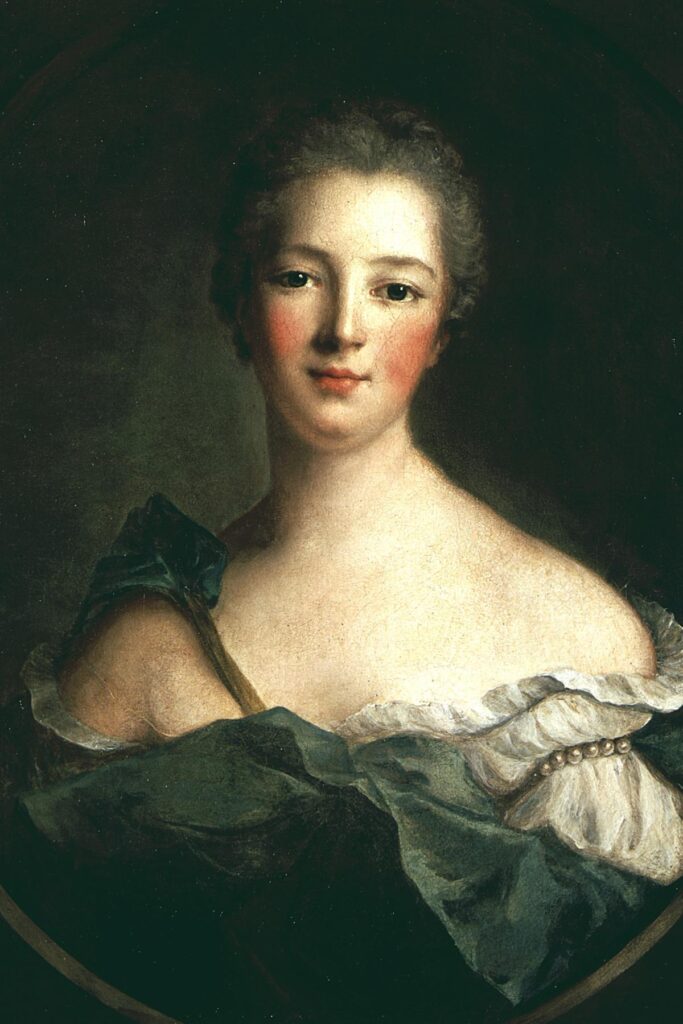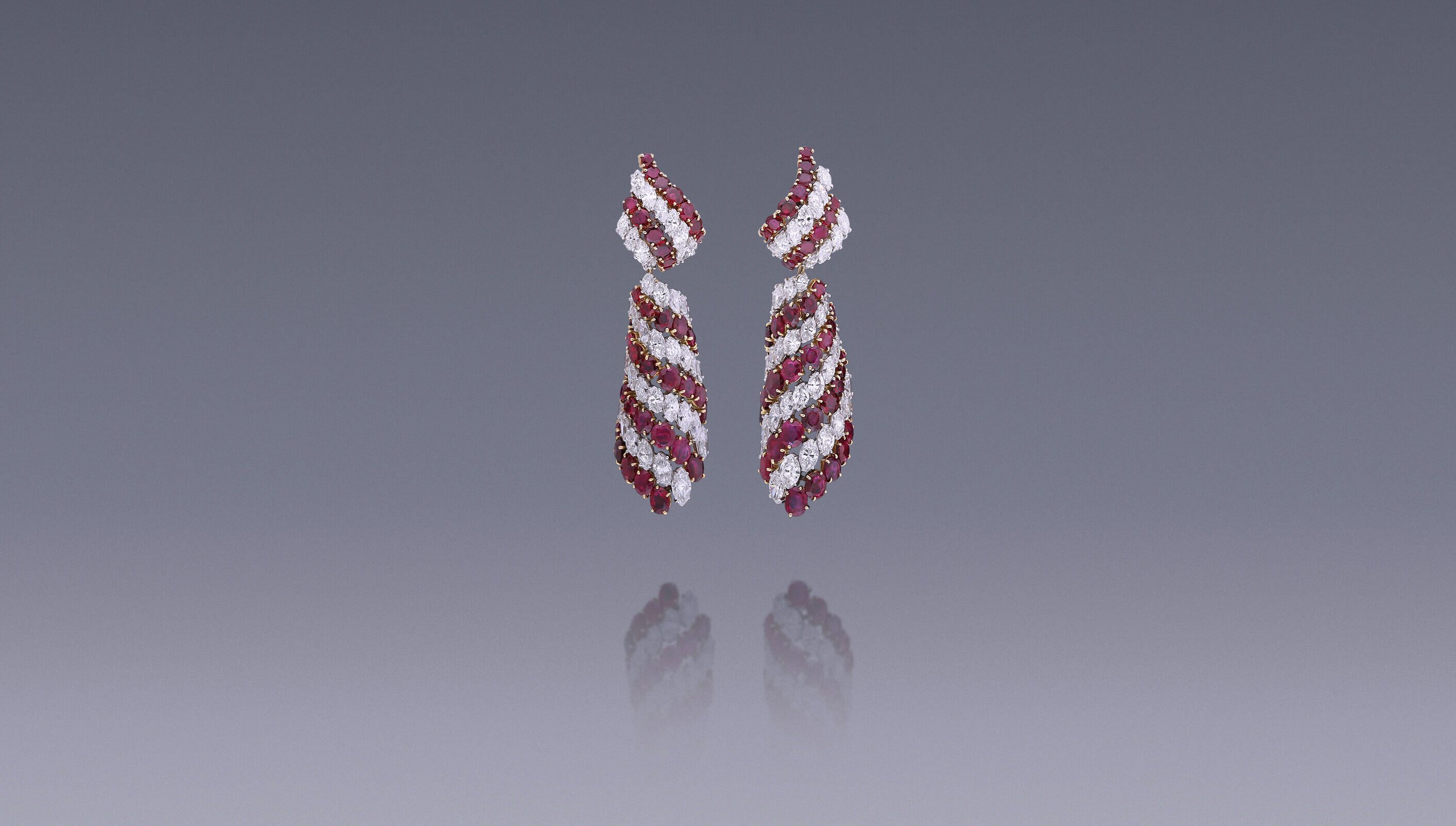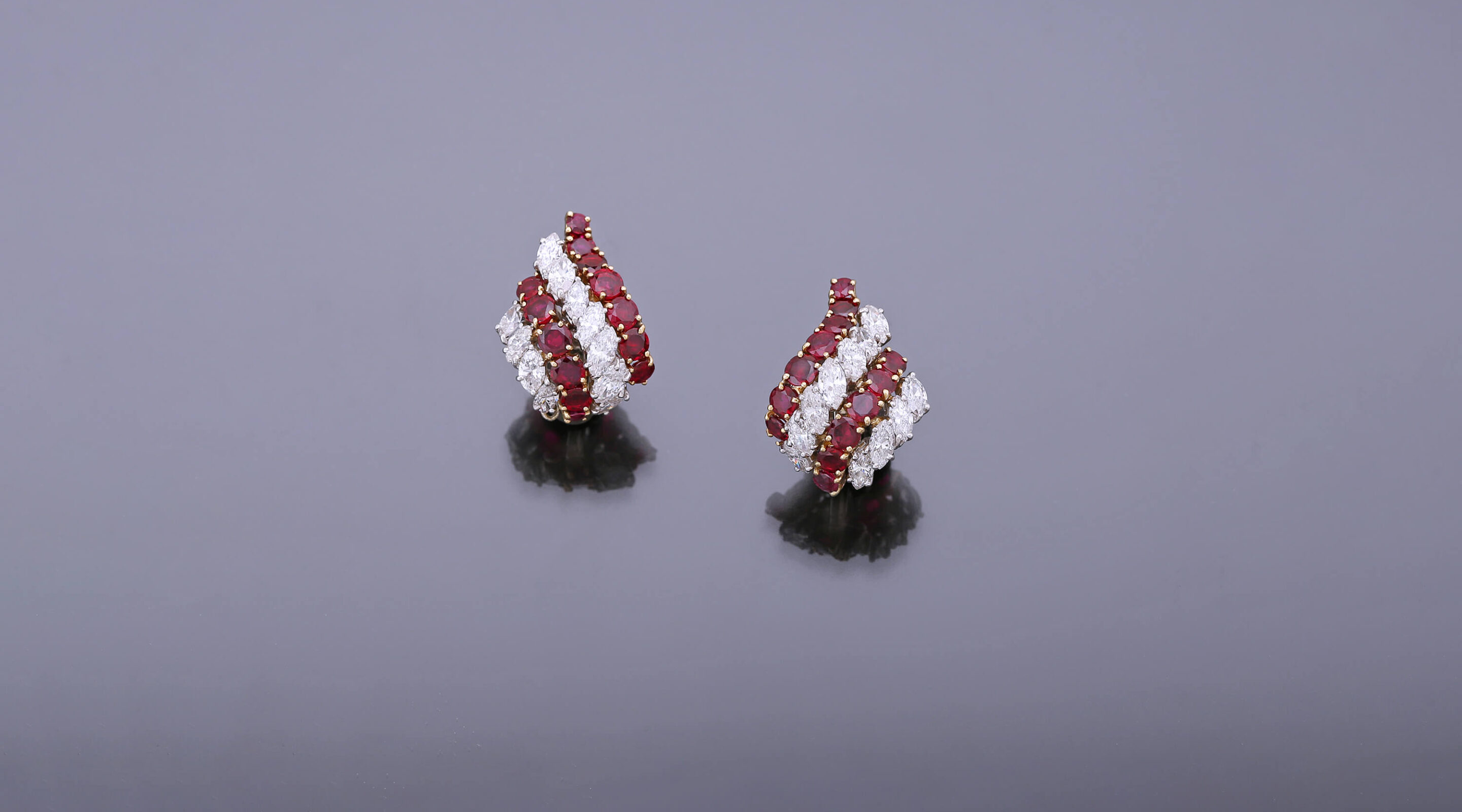This stunning pair of chandelier earrings, made of platinum, gold, rubies and diamonds was made by Harry Winston in New York in the 1970’s. The earrings are made up of a curved, asymmetrical lozenge shape worn on the ear lobe. Below it hangs a half rounded, likewise asymmetrical, elongated pendant, ending in a point. This section is exquisitely designed, creating the illusion of fabric set with precious stones of a very high quality. Both parts are set in alternate rows of marquise cut diamonds and round and oval cut, well matched, deep red rubies. The bright and lively diamonds are set in platinum and the rubies in eighteen-carat yellow gold. The top part of these day & night earrings can be worn separately.
Ruby and Diamond Ear Pendants
Day & Night
Day & night earrings usually consist of two separate elements. The top part is designed to be worn during the day – when the wearer wants to appear less dressy. In the evening the lower part can be added to create a stunning jewel for nighttime. Day and night earrings are always pendants, simply because of the way the lower part is attached. This versatility makes this type of earring very attractive and most of the world’s leading jewellers have day and night earrings in their collections, amongst which Harry Winston.
Marquise Cut
Although the diamond cut in these earrings is also called navette cut, it is much wider known by the much more appealing and romantic name Marquise cut. According to legend, the French King Louis XV (1710-1774) commissioned his court jewellers to create a diamond that would remind him of the lips of his mistress, Jeanne Antoinette Poisson, world renowned as Madame de Pompadour. She was a Marquise, a noble title granted by the king when he bought Pompadour for her, a castle more than 500 km south of Paris, with the noble title that went with it. She had the most perfect lips he had ever seen. The narrow design of the diamond cut named after her was refined over time, but the likeness to the original remains. The marquise cut is essentially an elongated oval with pointed ends. The longer shape makes the stone look larger than round diamonds of the same carat weight.

Ruby
The word ruby derives from ruber, Latin for red. Rubies have been valued since antiquity. The oldest written sources about mining rubies mention digs in Burma. From there the stones followed the trading routes to the courts and temples of the Ancient Egyptians and Greeks. In the Middle Ages, rubies were also popular in Rome. Initially they were cut to an oval shape. The ruby was regarded as the stone of life, which strengthened the heart and restored vigour. People in Antiquity and the Middle Ages attributed magical powers to rubies. The ruby is the traditional birthstone for the month of July. Rubies are mined in Africa, Asia and Australia. They are found mostly in Burma, Sri Lanka and Thailand, although they also occur in Montana and South Carolina.
The hard gemstone is a variety of the mineral corundum in which the red colour is mainly caused by the element chromium. Rubies come in many shades, but red is always the dominant colour. All other varieties of corundum are called sapphire, even if they are not blue, but orange, green or yellow. Even if the dominant colour is pink or purple, with secondary red overtones, we speak of pink and purple sapphires, not rubies. Besides colour, purity, carat and cut also determine the quality of the ruby. The highest valued are the deep-bright red rubies (pigeon blood rubies) that have a high purity.
The Designer
Jacques Timey designed many jewels for Harry Winston in the 1960s. Harry Winston was known for engaging classically trained artists as jewellery designers because he believed that they had an innate feeling for the interplay of design and gemstones. A masterly design is transformational and further enhanced the extraordinarily high-quality stones with which Winston worked. As well as earrings, Timey made rings, bracelets and necklaces for Winston that made the high-quality precious stones look even more spectacular.
King of Diamonds
In 1947 the magazine Cosmopolitan gave Harry Winston, the world-famous jeweller for whom Jacques Timey made the most beautiful designs, a nickname that would remain with him until the end of his career: the King of Diamonds. Long before that, however, he made the headlines as one of the leading agents dealing with important country estates and extraordinary diamonds.
The son of Russian Jewish immigrants, Harry Winston started to work in his father’s shop at an early age. Winston opened his first business, the Premier Diamond Company, on 535 Fifth Avenue in 1920, when he was twenty-four. His empire was born when he started to acquire the estates of prominent American socialites. One of the first was the estate of Rebecca Darlington Stoddard in 1925, followed a year later by the collection of Arabella Huntington, the widow of a railway tycoon. Mrs Huntington owned one of the most important collections of jewellery at that time, chiefly from renowned Parisian jewellers like Cartier. Winston took the precious stones out of the often dated pieces and reset them in his own, more contemporary designs which he sold to a growing international clientele. Winston travelled all over the world in search of the finest diamonds and other gems for his wide-ranging and demanding clients. It seems that a third of the world’s most famous diamonds passed through Harry Winston's hands during his long career. In 1949 Harry Winston acquired the most famous stone of all, the 45.52-carat Hope Diamond. The heart-shaped blue diamond, originally extracted in India, was at the centre of the crown jewels of pre-revolutionary France, before it surfaced in England and passed to King George IV. In 1958 Winston donated the Hope Diamond to the Smithsonian Institution in Washington DC, where it is on permanent display.

This site is protected by reCAPTCHA and the Google Privacy Policy and Terms of Service apply.

